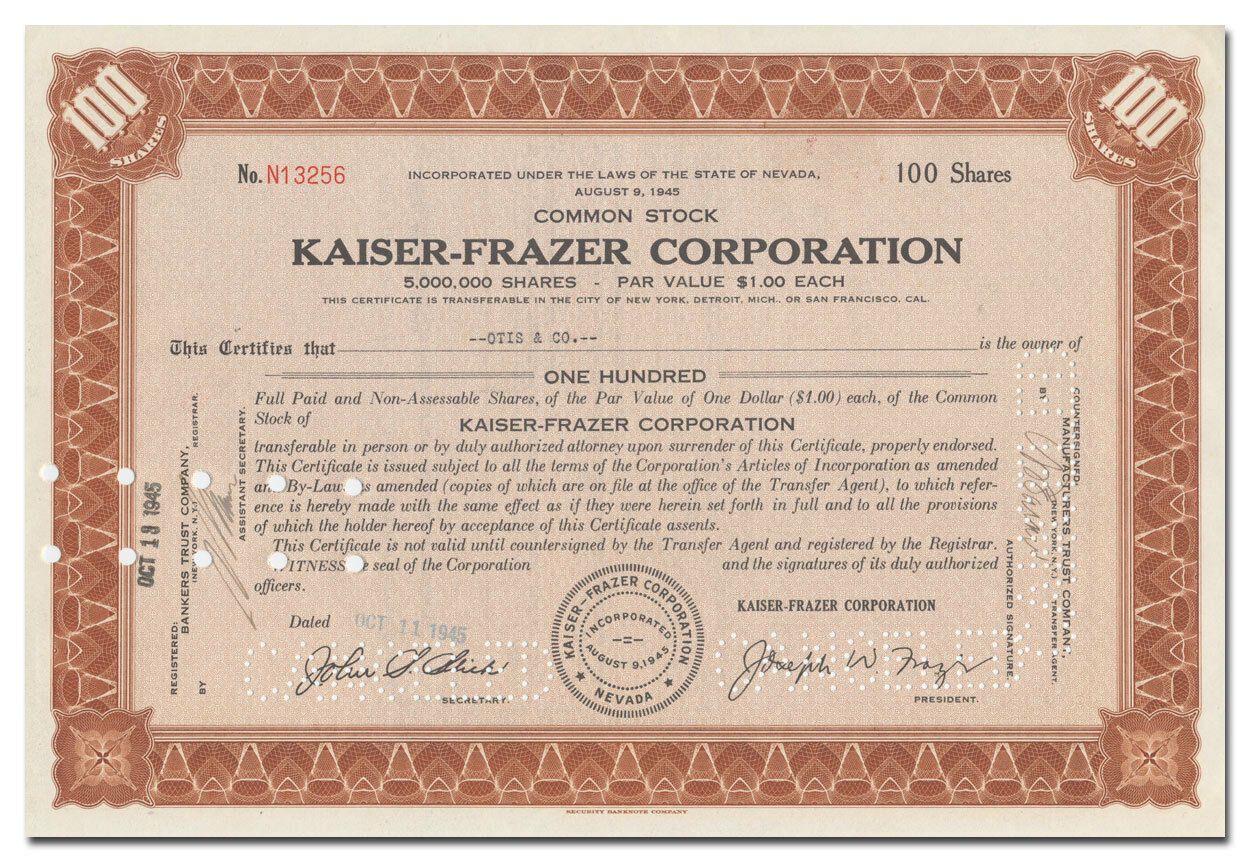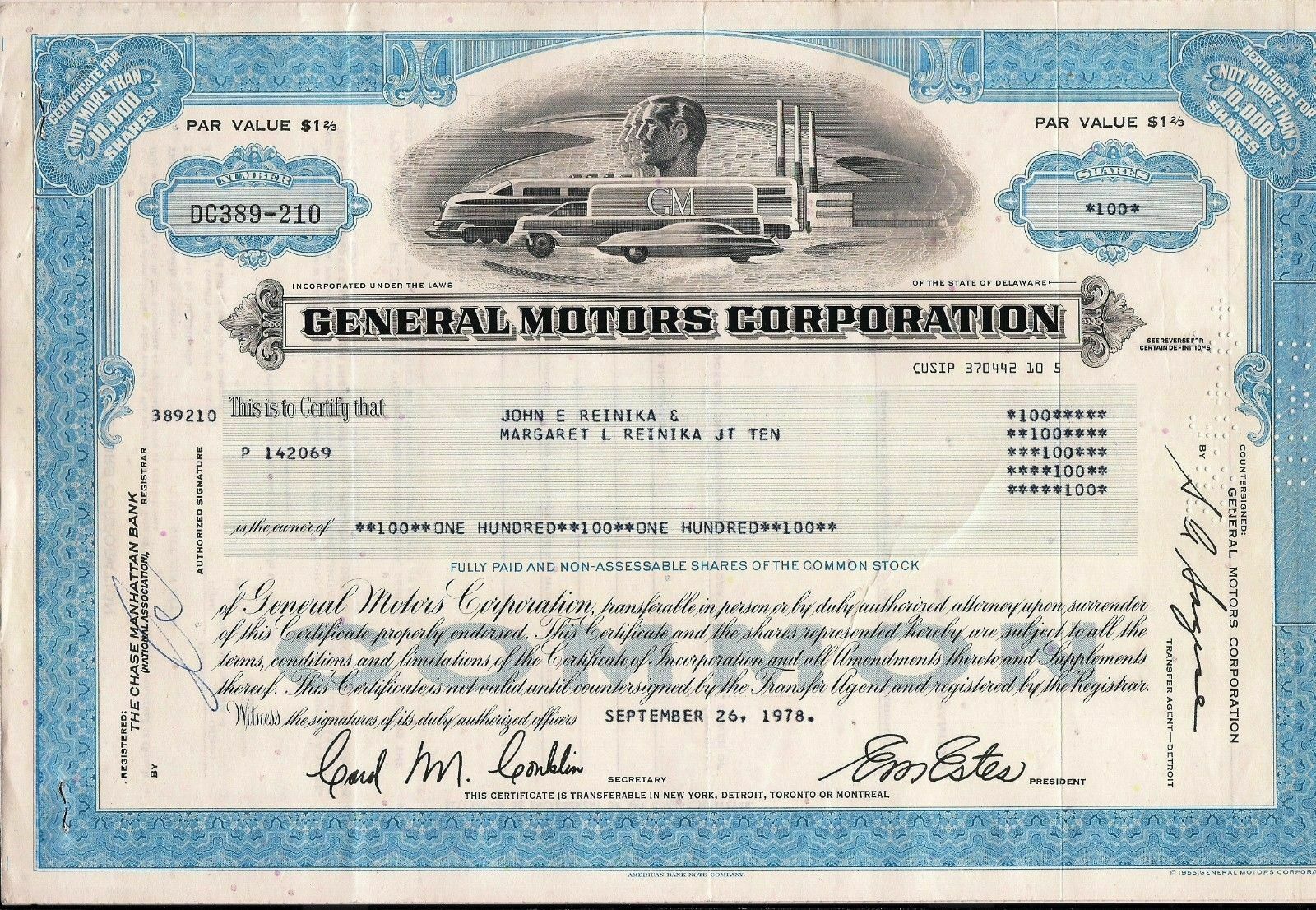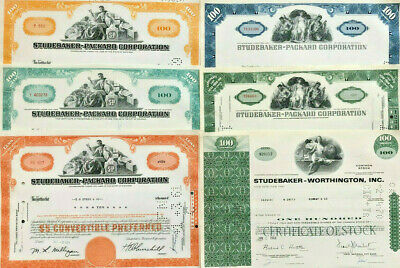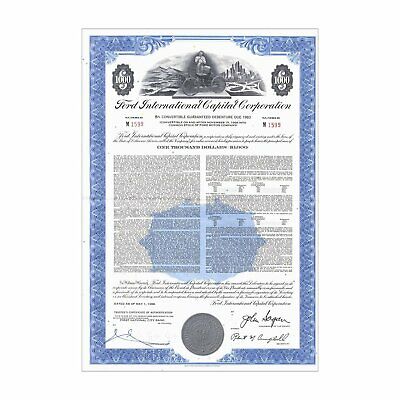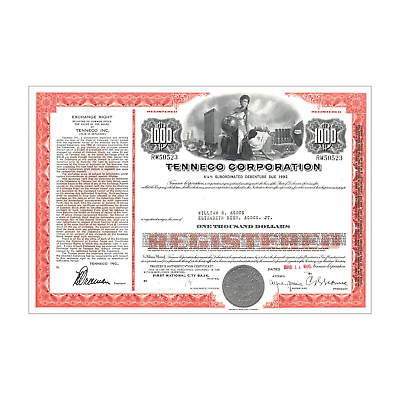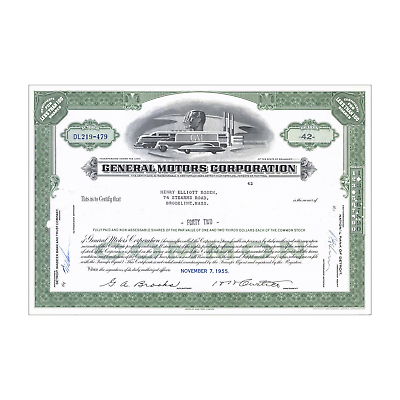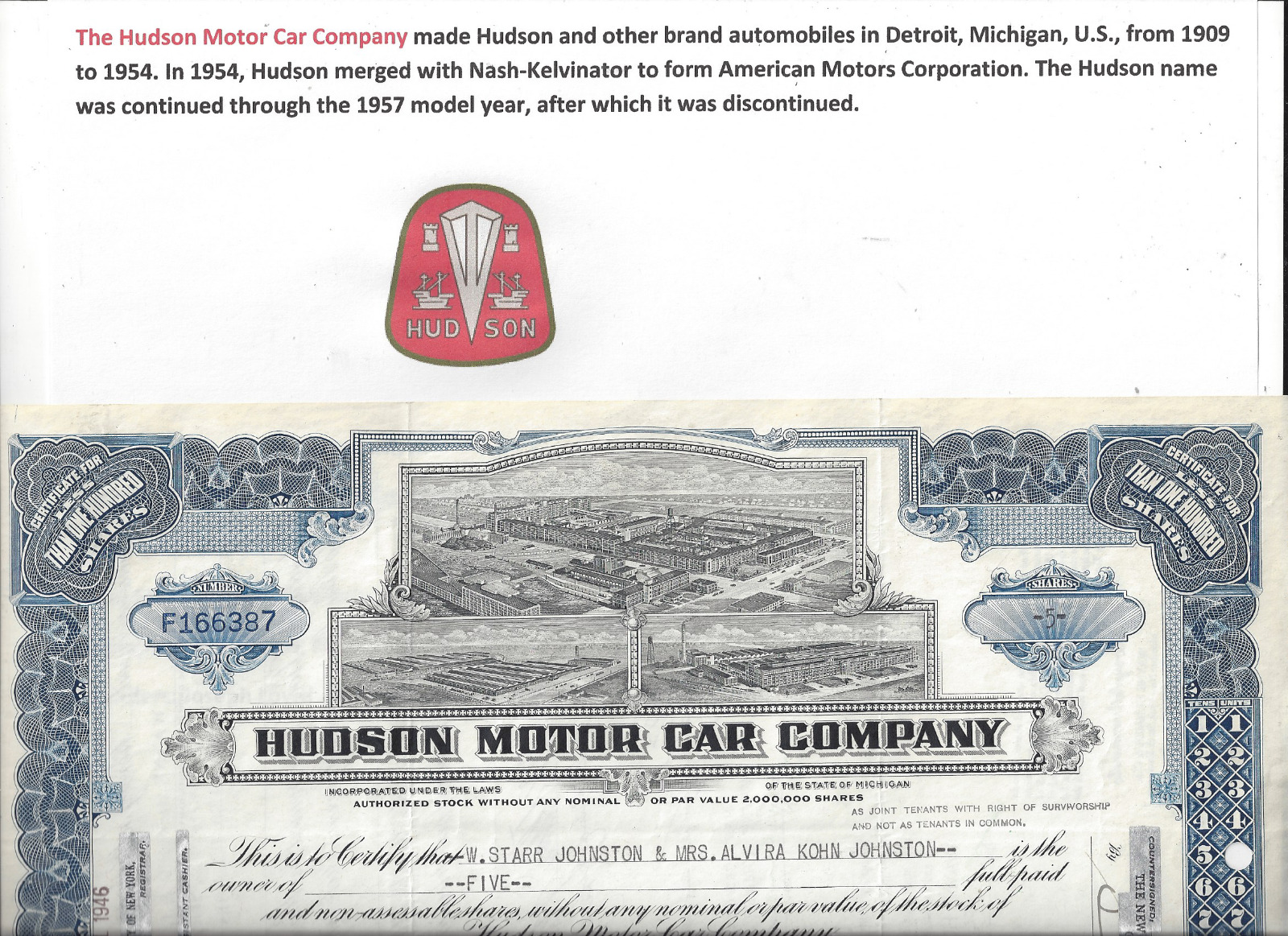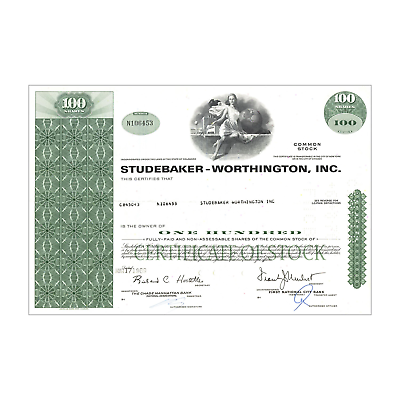-40%
Kaiser-Frazer Corporation Stock Certificate
$ 2.11
- Description
- Size Guide
Description
Product DetailsNicely engraved antique stock certificate from the Kaiser-Frazer Corporation dating back to the 1940's and 1950's. This document, which was printed by the Security Bank Note Company, carries the printed signatures of the company President and Secretary and measures approximately 12" (w) by 8 1/4" (h).
Images
The images presented are representative of the piece(s) you will receive. When representative images are presented for one of our offerings, you will receive a certificate in similar condition as the one pictured; however dating, denomination, certificate number and issuance details may vary.
Historical Context
Just as World War II was ending, the Kaiser-Frazer Corporation was formed by Henry J. Kaiser and Joseph W. Frazer (whose printed signature appears on this certificate) to produce new automobiles for the new-car thirsty post-war crowds. The first Kaiser-Frazer Cars were released in 1946 as the first mass-produced 1947 new car models. They were unique designs for their time with design contributions by Mr. Howard "Dutch" Darrin who also designed several "custom-bodied" cars including Rolls-Royce, Duesenberg and the famous "Packard Darrin." He also designed and built the prototype of the beautiful "Kaiser Darrin" fiberglass sports car.
Although Darrin had created an entirely new modern design for the 1947 Kaiser-Frazer cars, he felt that the Kaiser-Frazer engineers had ruined his design with major compromises to rush the new 1947 models into production, and he was furious. Darrin's design was much more low-slung and sleek with a unique "Darrin dip" on the rear fenders, and although Darrin's basic body lines were somewhat adapted and the first Kaisers and Frazers were quite good-looking, they were much more fat and bulbous than the original Darrin design. The first production cars were issued with a "Styled by Darrin" script. Darrin quickly had them discontinued from the remainder of the 1948-50 cars. He felt that strong about the modifications to his original design.
During the years 1947 through 1954, Howard Darrin continued to contribute his design talents to Kaiser (Frazer had bowed out of the company in 1951). However it was not until the 1951 Kaiser cars were produced that Howard Darrin felt his original and beautiful design ideas were adequately applied to the Kaiser cars. He proudly allowed the return of the "Styled by Darrin" script emblem to the 1951 models. The 1951 Kaiser was a truly unique and very beautiful car. It won many international awards and was given rave reviews throughout the industry, especially for it's beauty, and is still considered today as one of the most pleasant-looking American automobiles ever mass-produced.
The Kaiser-Frazer Corporation introduced several major innovations both in the methods used to build cars as well as many new car models and features. They built the first "hatchback" car, the first "safety-first" car, with recessed instruments, padded dash and pop-out windshields. They also built the first 4-door hardtop that many incorrectly give credit for to General Motors, and they built the first post-war four-door convertible.
Kaiser-Frazer created the biggest threat ever made to the Detroit establishment of US Automakers. The Kaiser-Frazer organization gave Detroit a real "wake-up" call with its new designs and revolutionary new car models and features. Things would never be the same after the Kaiser-Frazer venture. No other group of people had the post-war impact on the American Automobile that this "up-start" free-thinking group of widely diverse professionals had. Even though several independent car makers such as Packard, Studebaker, Hudson and Nash certainly impacted the "Detroit Establishment," their combined overall post-war impact was minuscule compared to Kaiser-Frazer. Credit has never been properly given to the Kaiser-Frazer organization for their many contributions to the industry, both in the United States and overseas.
Many don't realize even now that K-F's impact did not stop at our shores. Their overseas operations and influence were substantial. Contrary to the belief of some, even the "foreign influence" from the eastern (Japan, Tiwain, etc.) and European countries (Germany, England, Italy, etc.) did not have the impact on the American automotive industry that the Kaiser-Frazer organization had, especially considering it's short life.
The Kaiser and Frazer cars were only produced in the United States from 1946 through 1955 by the Kaiser-Frazer and Kaiser-Willys Corporations (they were produced in Argentina until 1962.) A very brief period for such a unique and quality line of cars. Several factors determined the premature end of the Kaiser car line. Some were under the control of Henry J. Kaiser himself and some were not.
